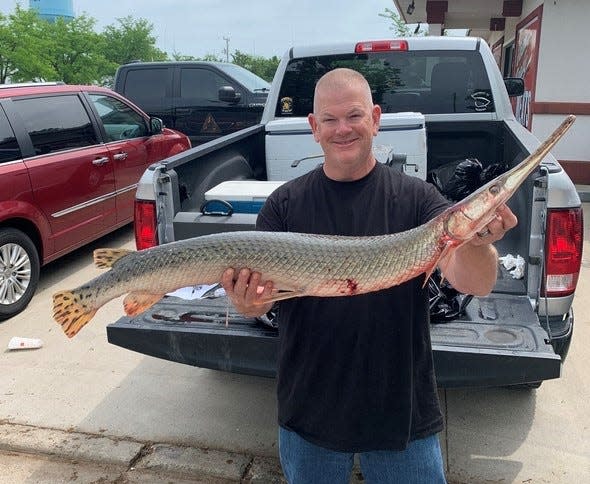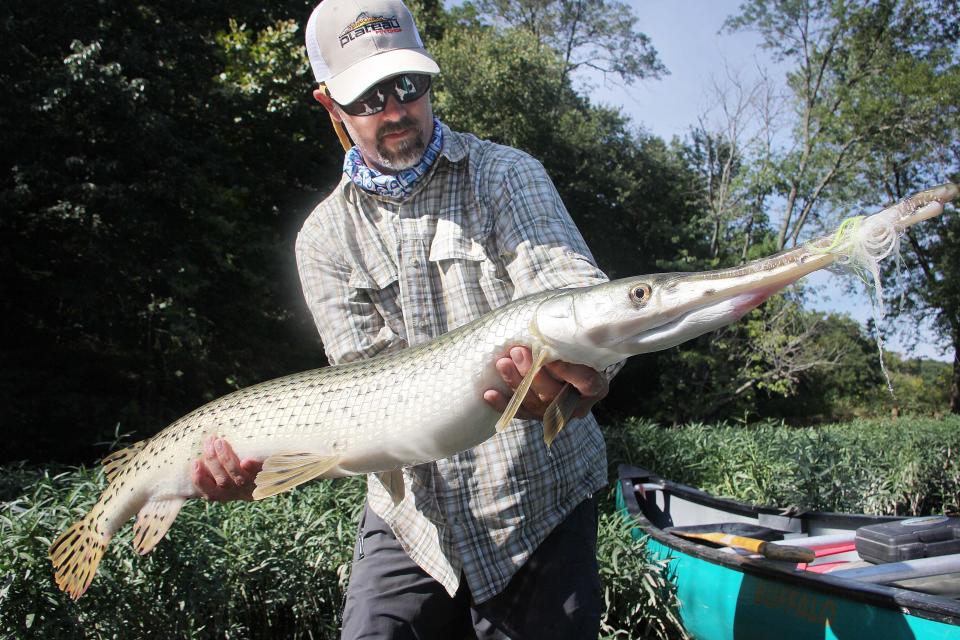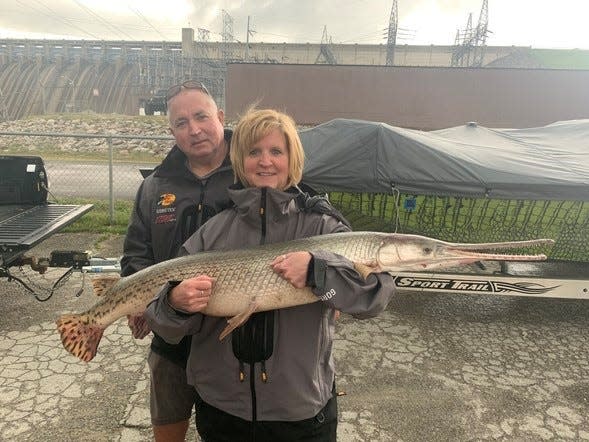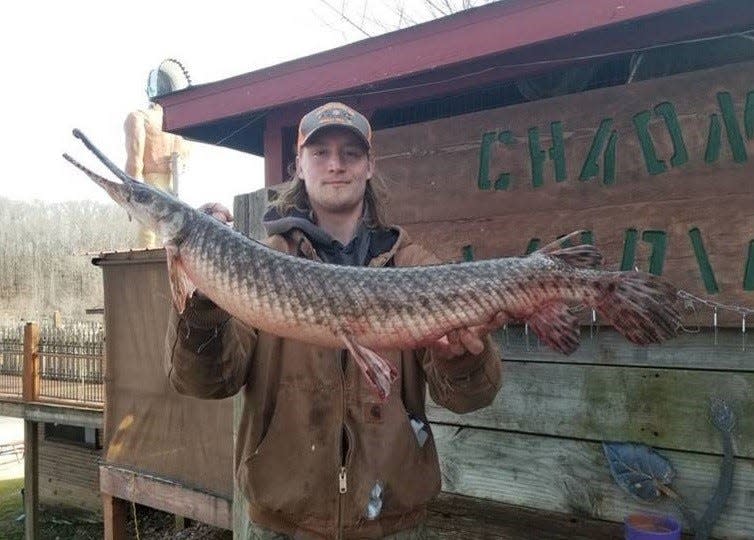Missouri record rescinded after second round of testing shows fish is not a pure shortnose gar

The Missouri Department of Conservation is now saying a reported shortnose gar was not a shortnose gar after all.
In the past week, the department released information stating a Nebraska man was bowfishing in May when he caught a new state record shortnose gar on Lake of the Ozarks. That status was rescinded Monday.
The genetic testing done to determine whether the fish was a pure shortnose may have been contaminated on the first go, said Andrew Branson, fisheries programs specialist with MDC.
Branson explained in a phone interview with the News-Leader that gar, which have four species native to Missouri, can cross-breed. So, a shortnose gar can spawn with a longnose gar, thus creating a hybrid. These hybrids cannot reproduce, however.
Saving the hellbender: 10,000th endangered salamander released in Missouri

Questions surrounding the legitimacy of the gar as a shortnose were also circulating.
"There was still some question from folks that, 'Is this really right? Boy, it sure doesn't look right,'" Branson said.
The department talked with Missouri University of Science & Technology, who ran the original test, and a second round of testing began.
"That's when they determined the first test was wrong, and it actually was not a shortnose gar," Branson said Tuesday.
MDC stated in a news release that the previous shortnose gar alternative records method of 13-pounds, 1-ounce still stands. The fish was taken from Mark Twain Lake in 2006.
What may have gone wrong with the genetic testing?
The department often uses other entities, like universities, to test samples of fish. Not every fish sample can easily be stored in one place.
Missouri S&T has a sample of a pure shortnose gar. They used that sample against the gar caught earlier this year. The first round of testing said it was a match.
"Apparently, when they did the second test, those known samples can be contaminated," Branson said. "They can have other genetic material in them from previous tests."
In the second round of testing, the existing shortnose gar sample was thoroughly "scrubbed" to ensure it was a pure sample.
Other wildlife news: Christian County couple catches juvenile black bear snoozing on a tree limb in backyard

"Then they ran the test again with our fish against the now clean known sample, and then that's when it came out as not a shortnose gar," Branson said.
Despite now knowing the fish is not a pure shortnose, more tests will be conducted to determine if it is a hybrid.
Gar can hybridize
There are four kinds of gar in Missouri, including alligator, longnose, shortnose and spotted.
This particular case brings up a point that gar can hybridize.
"You can actually have a shortnose gar spawn or breed with a longnose gar and then the offspring is a hybrid — it's a cross between both so the offspring is not a pure shortnose, it's not a pure longnose, it's a hybrid," Branson said.
The hybrids can take on an appearance of both shortnose and longnose or they can lean one way over the other.
"For our state records, that's what we recognize for most of our fish, just the pure fish," Branson said as far as MDC's state records.

Like most hybrids species, gar hybrid offspring don't usually reproduce.
"So that's why you don't see a whole lot of these hybrids out there," Branson said. "We don't know if this fish is a hybrid or not. All we know at this point is it turned out it was not a pure shortnose, but we may find out it's either a hybrid with a long nose or it could be a longnose gar that's got kind of a shorter beak on it."
Although some folks may think gar are a nuisance or can be aggressive, they serve a purpose in the ecosystem, Branson said.
"They're a useful fish," Branson said. "They actually provide a good benefit to the fish population. They mainly feed on sick and injured fish that are easy to catch. They may eat some of the prized game fish that people like, but that's not a big part of their diet."
Sara Karnes is an Outdoors Reporter with the Springfield News-Leader. Follow along with her adventures on Twitter and Instagram @Sara_Karnes. Got a story to tell? Email her at skarnes@springfi.gannett.com.
This article originally appeared on Springfield News-Leader: Second test shows record fish wasn't pure shortnose gar; MDC corrects

